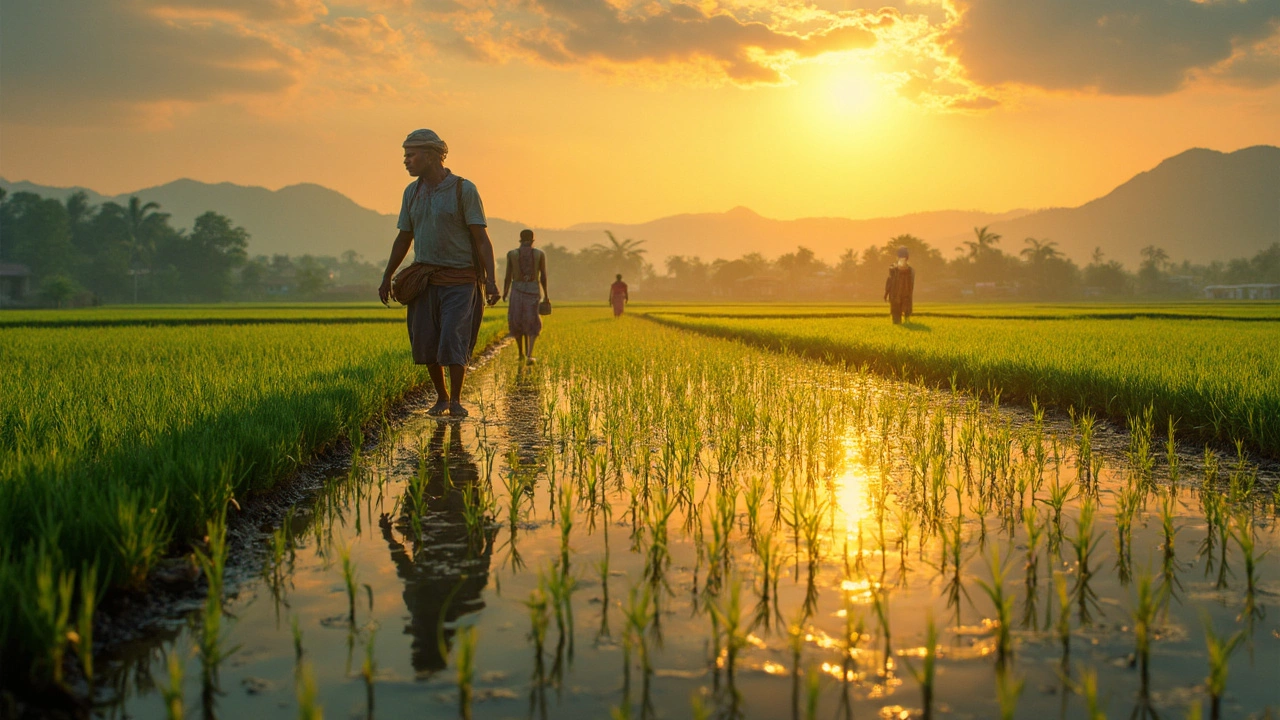Rice Paddies: How to Grow Healthy Rice in India
If you’re thinking about starting a rice field or improving an existing one, the first thing to sort out is soil. Rice loves a heavy, water‑logged loam that can hold moisture without turning to cement. Look for soils rich in organic matter and low in compaction. Adding compost or well‑rotted manure before flooding will give the seedlings a soft start.
Next up is water management. Rice paddies need a steady shallow layer of water for most of the growing season. Too little and the plants wilt; too much and they drown. The trick is to keep the water level just a few centimeters above the soil surface. Use simple earthen bunds or low‑tech gates to control flow, and check the level daily during hot spells.
Pick the Right Variety and Know the Risks
India offers many rice varieties, from short‑grain basmati to hardy rain‑fed types. Choose one that matches your climate and the length of your monsoon. Remember, rice business comes with risks – unpredictable weather, price swings, and pests can bite hard. Keep a small buffer of cash and consider diversified cropping to soften a bad season.
One common pest is the rice blast fungus, which thrives in humid conditions. Plant resistant seeds, rotate crops, and keep the field clean of leftover straw. If you spot early symptoms, a spray of neem oil or copper-based fungicide can keep the damage low without harming the environment.
Boost Yield with Simple Practices
How many grains can you expect from one plant? A healthy rice stalk can produce 100‑150 grains, so a well‑managed acre can yield 3‑4 tons. To hit those numbers, space seedlings about 20 cm apart and thin out weak plants early. Thin plants let the strong ones get enough nutrients and sunlight.
Fertilizer use is another lever. A split application of nitrogen – half at transplanting and the rest at panicle initiation – often gives the best result. Pair nitrogen with a small dose of phosphorus and potassium to avoid nutrient imbalances that can stunt growth.
When it’s time to harvest, wait for the grains to turn golden and the stalks to dry. Cutting too early leaves a lot of starch behind; cutting too late raises the risk of shattering in the wind. After cutting, let the rice dry for a few days before threshing to get a clean grain.
Finally, think about the future of your paddies. Switching to System of Rice Intensification (SRI) or alternate wetting and drying (AWD) can cut water use by up to 30% while keeping yields stable. These methods also reduce methane emissions, making your farm more eco‑friendly.
Ready to start? Grab a soil test, pick a suitable variety, set up simple water controls, and follow these steps. With the right soil, careful water, and a few smart practices, your rice paddies can thrive and bring a good harvest every season.
Why Do Rice Farmers Flood Their Fields?
Flooding rice fields might puzzle some people, but it's a smart farming technique with many benefits. Rice thrives in wet conditions, and flooding helps control weeds and pests while providing necessary nutrients. Learning about this method uncovers how water management practices contribute significantly to successful rice harvests. It reveals a delicate balance between nature and agriculture that sustains rice production worldwide.
About
Rice Cultivation
Latest Posts


Ultimate Guide to Creating a Thriving Kitchen Garden
By Alden Thorne Jan 22, 2025

What Not to Grow in a Greenhouse: Avoid These Flower Flops
By Alden Thorne Mar 24, 2025

Rarest Flower in India: What Makes the Neelakurinji So Unique?
By Alden Thorne May 21, 2025

